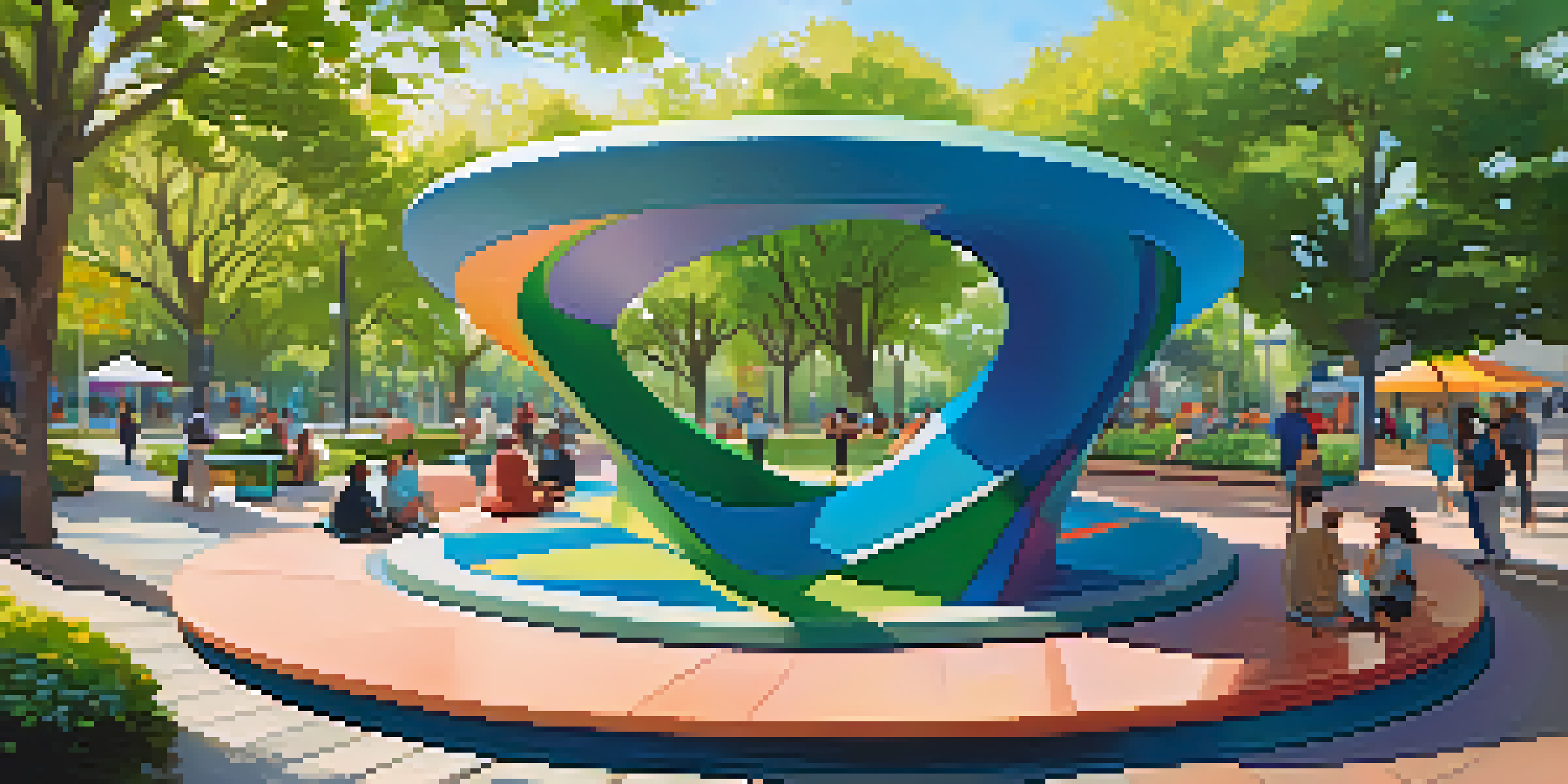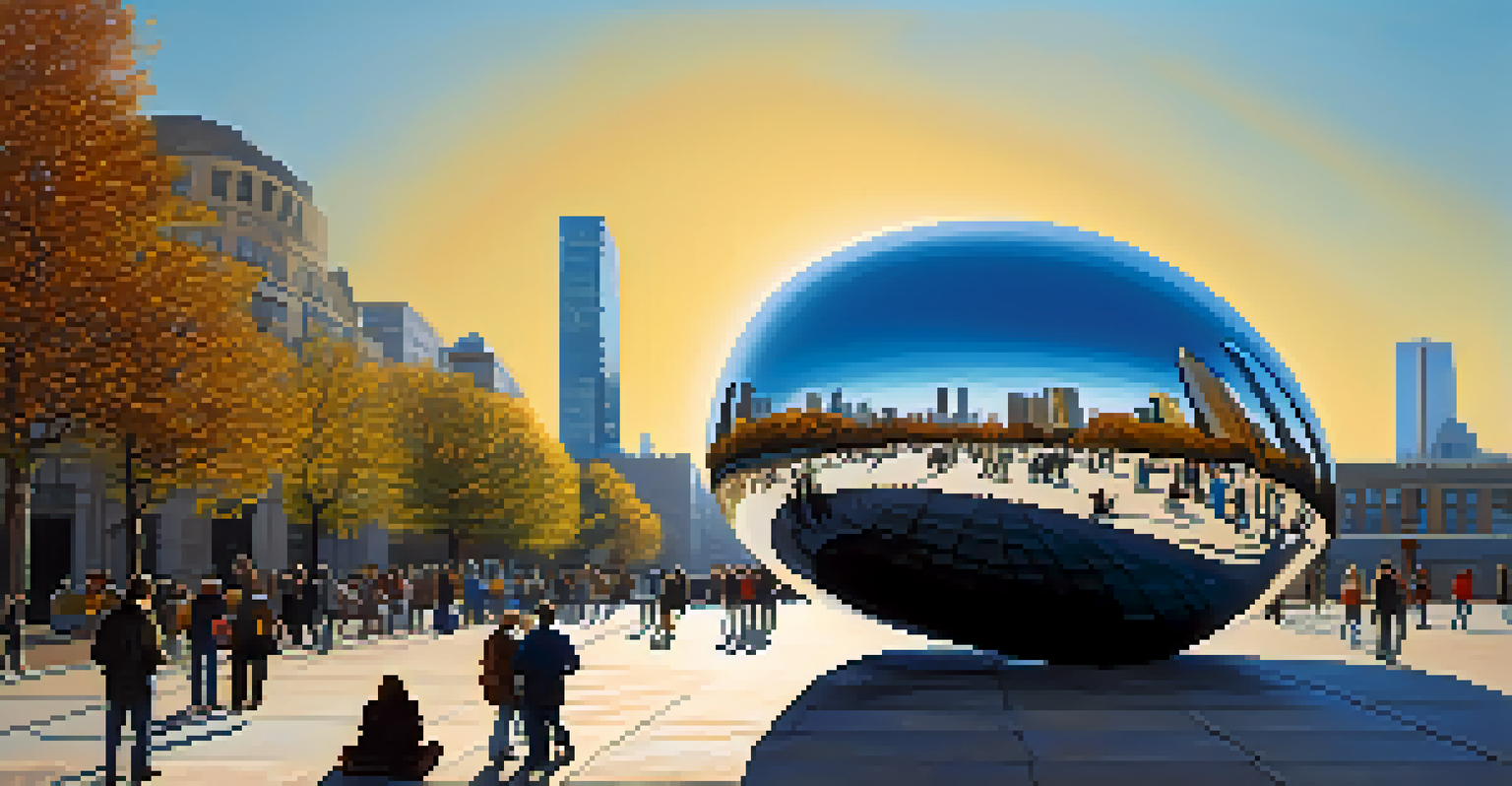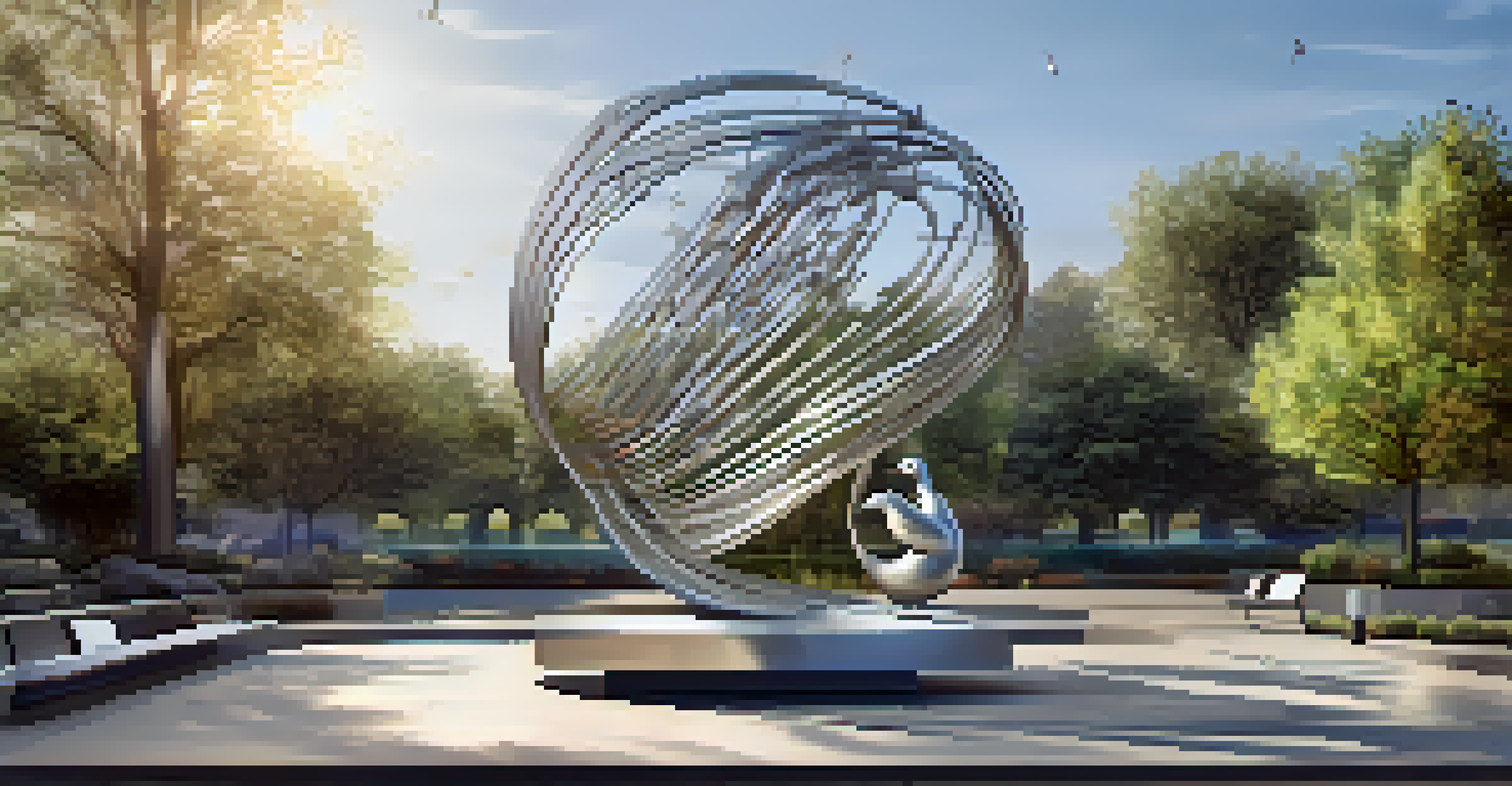The Influence of Public Sculpture on Urban Aesthetics

Understanding Public Sculpture: A Brief Overview
Public sculpture refers to artworks that are displayed in open spaces for the public to enjoy. These pieces can range from monumental statues to interactive installations, each contributing to the urban landscape. By creating a dialogue between art and environment, public sculptures often reflect cultural narratives and community values.
Art is not what you see, but what you make others see.
Historically, sculptures have served various purposes, from commemorating historical figures to enhancing the beauty of a city. They can be focal points in parks, squares, and streets, inviting people to pause and engage with their surroundings. The presence of such art can transform an ordinary space into a vibrant cultural hub.
As cities continue to evolve, the role of public sculpture in urban aesthetics becomes even more significant. It not only beautifies but also challenges perceptions, encourages dialogue, and fosters a sense of belonging among residents.
The Role of Public Sculpture in Urban Identity
Public sculptures play a crucial role in shaping a city's identity. They can represent historical events, cultural milestones, or community aspirations, serving as a visual representation of what the city stands for. For example, the famous 'Charging Bull' in New York symbolizes financial strength and resilience.

When people see a familiar sculpture, it often evokes feelings of pride and connection to their community. These pieces can become landmarks that define a city's character, influencing how both residents and visitors perceive the area. Sculptures can also reflect local craftsmanship and artistic talent, further enhancing a city's unique identity.
Public Sculptures Shape Urban Identity
Public sculptures serve as visual representations of a city's history and culture, fostering community pride and connection.
Moreover, public sculptures can act as conversation starters, prompting discussions about art, history, and social issues. Through these dialogues, sculptures help build a sense of community and shared experience, contributing to a cohesive urban identity.
Enhancing Urban Spaces with Art
One of the most immediate impacts of public sculpture is its ability to enhance the aesthetic appeal of urban spaces. A well-placed sculpture can transform a dull street corner or an empty park into an inviting area that encourages social interaction. For instance, colorful murals and playful installations can make public spaces feel more lively and engaging.
Public art is a way to provide an artistic voice to the community and give them a sense of ownership.
Sculptures can also create a sense of place, giving areas their own unique character. This can be particularly important in urban planning, where design choices aim to foster community interaction and pride. When art is integrated into public spaces, it invites people to gather, relax, and appreciate their surroundings.
Additionally, public sculptures can contribute to environmental sustainability. Eco-friendly installations can highlight the importance of nature and conservation, reminding us of our responsibility towards the environment. This blend of art and sustainability can lead to more thoughtful urban designs.
Public Sculpture as a Catalyst for Community Engagement
Public sculptures often serve as more than just aesthetic enhancements; they can actively engage the community. Through interactive installations or community-driven projects, sculptures invite participation and collaboration. This engagement fosters a sense of ownership and pride among residents.
Art events, such as sculpture walks or festivals, can further encourage community involvement. These occasions often bring people together, creating opportunities for dialogue and connection. When residents participate in the creation or appreciation of public art, they build stronger ties to their community.
Art Enhances Urban Spaces and Life
Well-placed public sculptures can transform ordinary areas into vibrant spaces that encourage social interaction and appreciation.
Moreover, these engagements can lead to a deeper understanding of local issues and cultural heritage. By involving the community in discussions around public sculptures, cities can promote inclusivity and representation, ensuring that the art reflects the diverse voices within the community.
The Impact of Sculpture on Urban Tourism
Public sculptures can significantly boost urban tourism by attracting visitors to specific locations. Iconic pieces often become must-see attractions, drawing tourists who want to experience the local culture. For example, the 'Bean' in Chicago has become a symbol of the city, capturing the imagination of millions each year.
As tourists visit these sculptures, they often explore the surrounding areas, benefiting local businesses and the economy. This ripple effect can lead to increased investment in urban spaces, encouraging cities to enhance their artistic offerings. In turn, a vibrant public art scene can elevate a city's status as a cultural destination.
However, it’s important to balance tourism with local needs. While attracting visitors is beneficial, cities must ensure that public sculptures resonate with the local community and contribute to their quality of life.
Challenges in Public Sculpture Implementation
Despite the benefits, implementing public sculptures is not without its challenges. Funding can be a significant hurdle, as cities often have limited budgets for public art projects. Securing financial support from both public and private sectors is crucial for bringing these artistic visions to life.
Moreover, the selection process for public sculptures can sometimes lead to controversy. Different community members may have varying opinions on what art should represent their neighborhood. Balancing diverse perspectives while selecting art that resonates with the community can be a complex task.
Community Engagement through Art
Interactive public sculptures invite community participation, fostering ownership and deeper connections to local heritage.
Additionally, maintenance and preservation of public sculptures are ongoing concerns. Environmental factors can take a toll on artworks, and without proper care, these pieces can deteriorate. Cities must prioritize sustainable practices to ensure that public sculptures remain in good condition for future generations.
The Future of Public Sculpture in Urban Environments
Looking ahead, the future of public sculpture in urban environments is promising and evolving. Advances in technology and materials are opening up new possibilities for artists, allowing for innovative and interactive designs. From augmented reality installations to kinetic sculptures, the potential for creativity is limitless.
Moreover, the growing emphasis on sustainability is likely to influence public art. Artists may incorporate eco-friendly materials and practices, reflecting broader social movements towards environmental consciousness. This shift can lead to more meaningful connections between art and the community's values.

As cities continue to grow and change, the role of public sculpture will remain vital. By fostering community engagement, enhancing urban aesthetics, and creating spaces for dialogue, public sculptures will continue to shape the identity and beauty of urban environments for years to come.